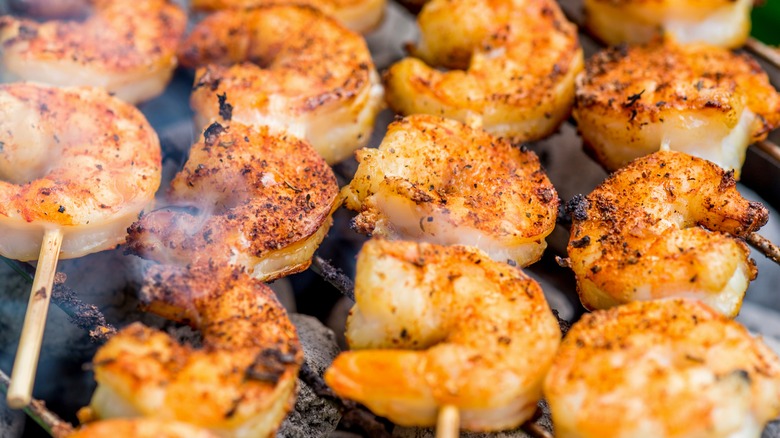What You Need To Know Before Cooking Shrimp In The Oven
Shrimp is one of the most easy-to-love members of the crustacean family. The meat is easy to access without the knives and mallets required for lobsters and oysters, and the briny, sweet flavor melds well with a wide array of cuisines, from hot and spicy to mellow and mild. The only catch is that shrimp is notoriously easy to overcook, and even more so if you're looking for a crisp brown char from your oven's broiler or grill.
Because shrimp tails are relatively small, and their cylindrical shape creates a lot of surface area, heat easily penetrates the meat, meaning it's fast to cook. That's an advantage for many recipes, like when you want to stir fry shrimp or make a crunchy tempura -– the shrimp will be ready in a flash. But in the dry heat of the oven, you'll need to keep a close eye on shrimp to prevent overcooking. Save those oven-roasted recipes for the largest shrimp you can buy, which will give you the chance to brown the shrimp nicely before the inside is dry and rubbery.
Perfectly prepared shrimp
Successful lightly charred, oven-kissed shrimp start with a very hot oven and shrimp that are patted nearly dry -– you want the heat of the oven to start browning quickly, not create steam. Another trick to prevent overcooking is to thread the shrimp tightly onto skewers. Packing them close together protects some of the cooking surface from the oven's heat, allowing time for browning without overcooking the rest of the meat. Adding a marinade with a bit of sugar will also help with fast browning. Save part of the marinade to toss the cooked shrimp in for more flavor.
Overcooked shrimp have a tight C-shape, and might be nearly a complete circle from tail to tip. They are tough and chewy. You'll know your shrimp are perfectly ready when they become opaque and begin to curl into a gentler shape. The meat will have a snappy bite with great flavor and moisture at this stage.

